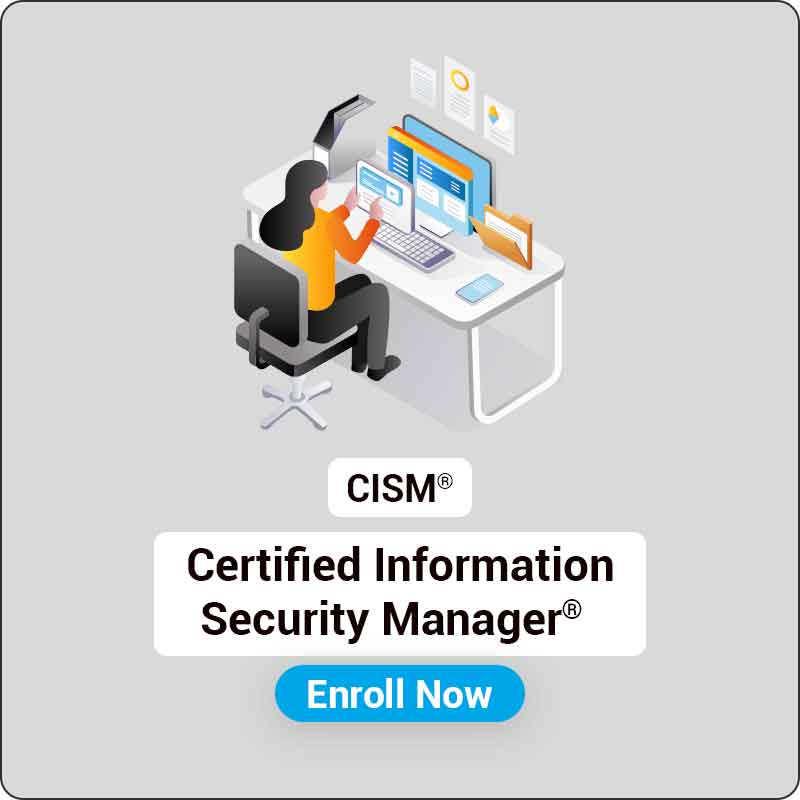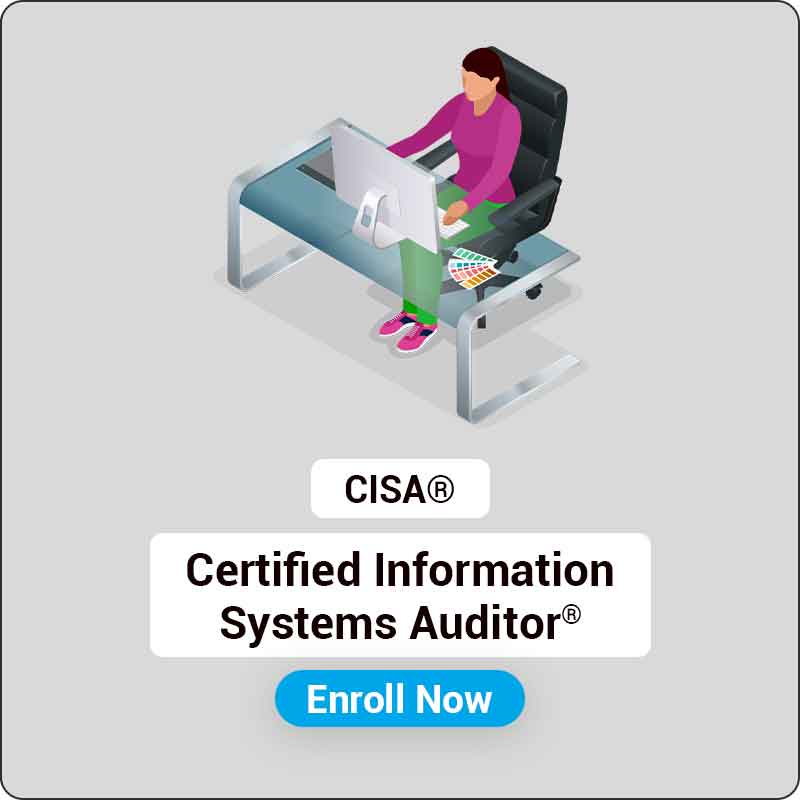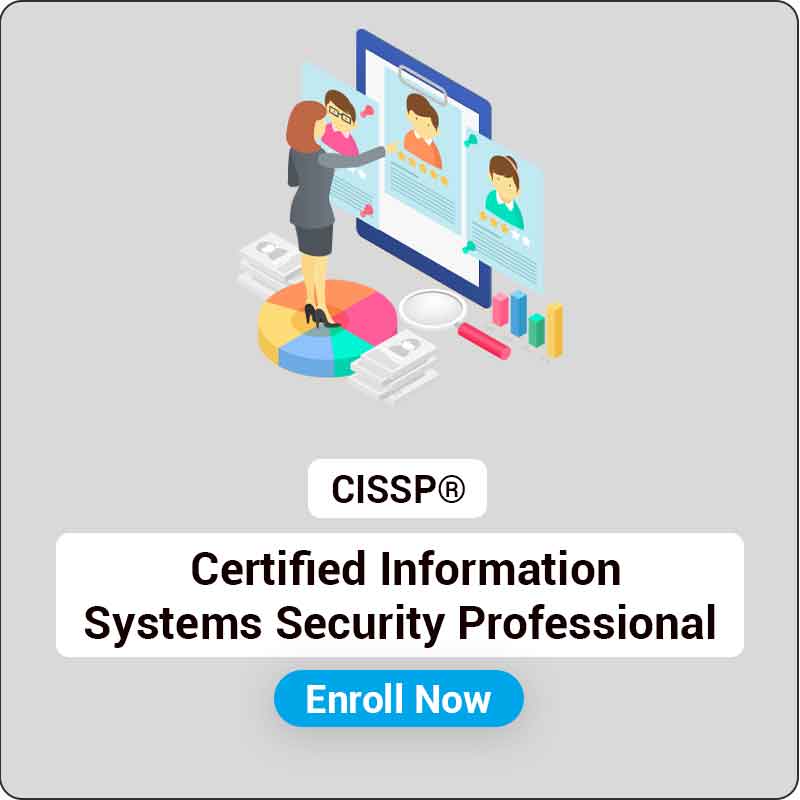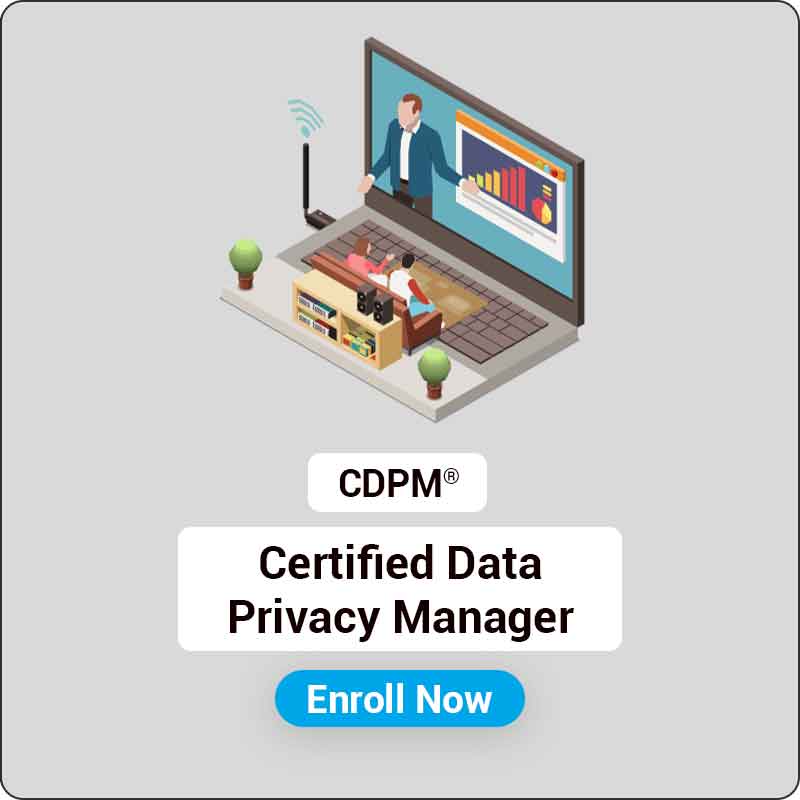CISSP
Certified Information Systems Security Professional
Certified Information Systems Security Professional in Pune
CISSP Course Training
Certified Information Systems Security Professional (CISSP)
4.5
853 enrolled on this course
Last updated Jan 2025

Course Package
Official Training Material from ISACA
Official CISSP E-Book
Highly Experienced & Accredited Instructor
Exam Voucher by ISACA
Live Instructor-Led Sessions
Real Life Examples & Case Studies
K-Prime Warranty
Learning Objectives of CISSP Course
- Participants in the Certified Information Systems Security Professional (CISSP) training will gain a comprehensive understanding of information security aspects in an organization as well as the knowledge necessary to become a CISSP certified professional.
- Become completely familiar with each of the 8 domains listed in the ISC2 CISSP Common Body of Knowledge (CBK)
- Improving business security operations
- Access control systems and different IT security and governance techniques for an enterprise
Target Audience of CISSP Certification
Network architects, security consultants, security architects, security auditors, security managers, CIOs, directory of security, security analysts, and security systems engineers are just a few of the job roles that can enroll in CISSP training. Anyone looking to pass their CISSP Certification Exam can also enroll in CISSP training.
Pre-requisites of CISSP Training

CISSP Exam and Certification Information
- CISSP CAT Exam Format (Only in English)
- Exam Name : Certified Information Systems Security Professional (CISSP)
- Exam Format : Multiple Choice, Computerized Adaptive Testing (CAT)
- Total Questions : 150 Questions
- Passing Score : 700 out of 1000
- Exam Duration : 180 Minutes
- Languages : English
- Testing Center : Pearson Vue
CISSP Certification Journey

Course Outline
- Understanding legal and regulatory issues that pertain to information security in a holistic context is important for determining compliance and other requirements. Understanding the requirements for different types of investigations (administrative, criminal, civil, regulated, industry standards), developing, documenting, and implementing security policy, standards, procedures, and guidelines is also important.
- Understand and apply risk management concepts; comprehend and apply threat modelling concepts and methodologies; apply supply chain risk management (SCRM) concepts; identify, evaluate, and prioritize business continuity (BC) requirements; contribute to and enforce personnel security policies and procedures; and establish and maintain a security awareness, education, and training program.
- Determine data security controls and compliance requirements. Identify and classify information and assets. Establish information and asset handling requirements. Securely provision resources. Manage the data lifecycle. Ensure appropriate asset retention (e.g., end-of-life (EOL), end-of-support (EOS).
Why Knowlathon

Established Expertise
Since 2013, Knowlathon has been offering high-quality training programs.

Client-Centric Approach
By prioritizing the unique needs and goals of each client, we deliver training solutions that drive tangible results.

Global Reach
Knowlathon has established itself as a trusted partner in IT training, helping individuals and businesses achieve their goals on a global scale.

Experienced Professionals
With deep industry knowledge and extensive expertise, our trainers bring real-world insights and practical skills to their courses.

Quality Commitment
We ensure that all training materials and methodologies meet industry benchmarks for excellence.

Strong Support
Our dedicated support team ensures a seamless and enriching learning experience.

K-Prime Warranty *
We are the 1st & only learning company to offer unlimited learning warranty on our courses.




.jpg)







Student feedback
Reviews